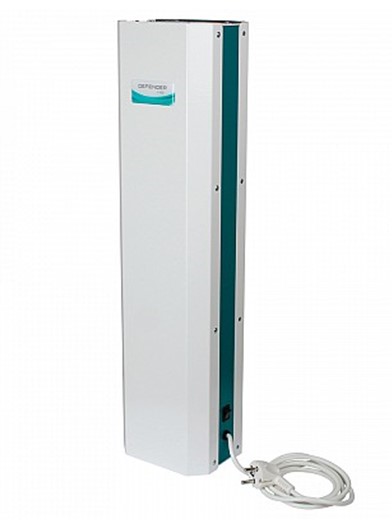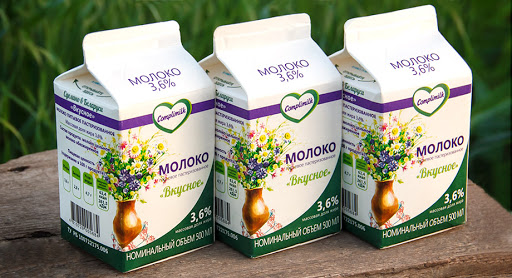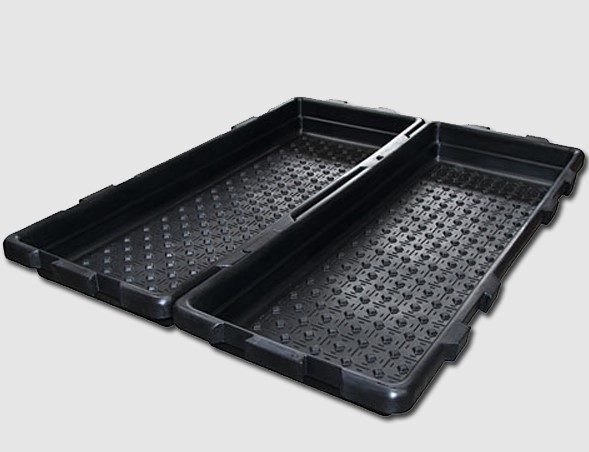Experts predicted a new reduction in the key rate of the Central Bank

 Express-tests PIONER 5 in1 for the determination of thiamphenicol, meloxicam, colistine, trimethoprim, sulfonamides
Express-tests PIONER 5 in1 for the determination of thiamphenicol, meloxicam, colistine, trimethoprim, sulfonamides PIONEER MEIZHENG BIO-TECH (5 in1) JC0871/ Rapid tests for the determination of the residual amount of β-lactams, tetracyclines, chloramphenicol, streptomycins, ceftiofur in milk, whey.
PIONEER MEIZHENG BIO-TECH (5 in1) JC0871/ Rapid tests for the determination of the residual amount of β-lactams, tetracyclines, chloramphenicol, streptomycins, ceftiofur in milk, whey.
The Bank of Russia at a meeting on April 29 will reduce the rate from 17 to 15%, according to experts interviewed by RBC. This easing will be the second in a month: in early April, the regulator made a decision at an unscheduled meeting to reduce the key rate from a record 20 to 17%. Commenting on it, the Central Bank pointed to a slowdown in inflation and the strengthening of the ruble, and also allowed a further reduction in the key rate.
Elvira Nabiullina, Chairman of the Bank of Russia, also maintained soft rhetoric regarding the key rate in the framework of the report on the work of the regulator before the State Duma. Speaking to parliamentarians on April 21, she indicated that the Central Bank "will consider the possibility of further reducing it at the next meetings."
The Central Bank cut the rate to 17% Finance
Analysts interviewed by RBC agreed that the regulator will cut the rate to 15%. Egor Susin, Managing DIRECTOR of Gazprombank Private Banking, allows for a decrease to 14%, and Olga Belenkaya, HEAD of the Macroeconomic Analysis Department of FG Finam, only up to 16%.
Most experts from the BLOOMBERG consensus forecast also believe that the rate will drop to 15%: 17 out of 21 analysts expressed this opinion. Two more poll participants believe that the Central Bank will cut the rate to 15.5%, and one that it will remain at 17 %.
As one of the main arguments in favor of reducing the key rate, RBC interlocutors name the improvement in inflationary expectations of the population. “They are still quite high, but compared to March, the situation has improved,” said Sofya Donets, an economist at Renaissance Capital for Russia and the CIS. According to the survey, the level of inflation expected by the population in April fell from 18.3% a month earlier to 12.5%.
The second argument in favor of lowering the key rate is the need to improve lending conditions. The key rate level of 17% almost stops lending, Belenkaya points out. “Efforts are needed so that banks actively lend, and do not accumulate liquidity,” continues Valery Vaysberg, director of the analytical department of the Region Group of Companies. Experts also call the strengthening of the ruble an important aspect. On March 11, at the maximum, the ruble exchange rate against the DOLLAR was 120.4; by April 22, it had strengthened to 75 rubles.
Read on RBC Pro Pro Dividends of Segezha Group can be up to 7.2% per annum.Will there be payouts Articles Pro Hostages of micromanagers:why companies are massively returning people to the office Articles Pro I listen, but I hear the wrong thing:how to deal with communication distortionscreative manual Instructions Prohow Russian business will change in two or three years Forecasts Pro Not a word about dissatisfaction:how to deal with negative emotions in the team Research Pro How to identify a recession in the economy by the length of skirts and the demand for underpants and lipstick ArticlesPro Russians switched to crisis shopping models: what and where they buy Researchwhat and where they buy Researchwhat and where they buy ResearchSiluanov called the reasons for the strengthening of the ruble
What will be the benchmark for the Central Bank
According to Rosstat, for the week from April 9 to April 15, prices increased by 0.2%. This figure is in line with last year's data, notes Igor Rapokhin, senior debt market strategist at SberCIB Investment Research. A week earlier, prices rose by 0.66%, and in early March, the inflation rate was more than 2%. “This [inflation slowdown] is taking place against the background of the strengthening of the ruble and the cooling of the rush consumer demand,” Belenkaya explains.
The strengthening of the ruble had a positive impact on the inflation expectations of the population, continues Susin. “They [expectations] are emotional in a sense, the strengthening of the ruble has influenced,” he explains. Enterprises reacted to the strengthening of the national currency “more skeptically, but their inflation expectations also decreased,” the expert adds. According to the Central Bank, the average growth rate of selling prices expected by enterprises in the next three months amounted to 18% in annual terms, in retail trade - 28.8%. Against the backdrop of a slowdown in current inflation and optimism in the expectations of the population and business, Susin predicts a reduction in the key rate at the next meeting to 14-15%.
In annual terms, inflation remains at a high level of 17.6%. But the regulator will be less focused on this indicator, Belenkaya believes, noting that inflation continues to grow due to the base effect. More important for the Central Bank will be precisely the inflation expectations of the population for the next year and the current seasonally adjusted annual inflation rate, she points out. According to Belenkaya, at the meeting on April 29, the regulator will cut the rate to 15-16%.
In the coming months, the annual inflation rate may exceed 20%, says Dmitry Polevoy, investment director at IC Loko-Invest. At the end of the year, the expert expects inflation of 21–23%, followed by a slowdown to 8–9% in 2023 and 4–6% in 2024. Belenkaya expects inflation to be in the range of 20-25%, but now expectations are declining "closer to the lower limit of this range." According to analysts surveyed by the Central Bank in April, the annual inflation rate could reach 22%, compared to the previous month, the forecast worsened by 2 percentage points.
Kudrin allowed inflation to reach 20% in 2022 Economy
What are the effects of policy easing?
The main task of the Bank of Russia is, on the one hand, a balance between inflation and inflationary expectations, on the other hand, restarting lending, Valery Vaysberg points out. “Demand for loans in March was expectedly weak, the rate cut will help improve lending conditions,” he said.
In March, the corporate loan portfolio decreased by 171 billion rubles. (minus 0.3%), and the volume of new loans decreased by about a third, follows from the report of the Central Bank on the development of the banking sector. The consumer lending market has rolled back to 2015 levels. The volume of issued cash loans decreased by 71.8%, car loans - by 80%.
“We have slowing economic activity. It is difficult to digitize it, but there is talk of a large number of people in the labor market who are in limbo (the risk of rising unemployment). We also see a drop in investment activity, a slowdown in demand activity. Under these conditions, the rate needs to be reduced,” says Sofya Donets. In her opinion, at the next meeting the Bank of Russia will reduce the key rate to 15%.
Olga Belenkaya believes that the Central Bank by lowering the rate will try to support lending to enterprises to a greater extent in order to make up for the shortage in the supply of goods, and mortgages. “The key rate should remain high enough to make ruble deposits attractive and likely to curb consumer lending, the excess growth of which could increase demand that is not backed by goods, accelerating inflation,” she notes.
How Unscheduled Central Bank Rate Cuts Will Affect Deposits and Loans
What will be the key rate by the end of the year
Experts believe that the rate cut at the April 29 meeting will not be the last. By the end of the year, the regulator will take several more steps to reduce it. “But in the future, the rate of decline may slow down. The current reduction steps (2-3 percentage points) are compensation for a fairly quick rate increase at the moment,” explains Egor Susin.
“By the end of the year, according to our forecasts, the key rate may reach 10-12%. After the April decline, it will move smoothly in this direction,” Sofya Donets from Renaissance Capital believes. Olga Belenkaya from Finam admits that the key rate may be reduced to 12-13% by the end of the year, "that is, it will remain below inflation in annual terms." The dynamics of the rate, according to the expert, will depend on inflation indicators, the situation in the economy, the dynamics of deposits, the ruble exchange rate, inflation expectations. Most likely, the Central Bank will bring the rate to 10% by July-September, Igor Rapokhin from SberCIB believes. “Which will significantly increase the availability of credit in the economy and smooth out problems on the supply side,” he adds. Dmitry Polevoy from Loko-Invest believes that at the end of the year the key rate will not exceed 11%.Read together with it:
- A Rostov broiler farmer was fined 750,000 rubles for selling meat contaminated with salmonella.The lawsuit against the poultry farm was filed by ROSSELKHOZNADZOR based on the results of an inspection that revealed serious violations of the production process. These included rust on metal structures, which compromised product quality, and unsanitary conditions that facilitated the growth of pathogenic microflora. A batch of Blagoyar pork legs with the backbone proved particularly dangerous, ...
- В Раменском выведена новая порода кроликов — Великородская белаяЭто значимое событие обозначает первую отечественную породу, разработанную для племенного и промышленного производства за последние 60 лет. Глава Раменского муниципального округа Эдуард Малышев посетил институт, где директор, доктор биологических наук Глеб Косовский, провел ознакомительную экскурсию для почетных гостей. Институт служит научно-методической базой для разработки технологий в области ...
- Боливия экспортирует говядину на сумму 797 миллионов долларов и вводит новые цифровые сертификаты для внешней торговлиЭкспорт говядины из Боливии в период с 2021 по 2025 год достиг 797 миллионов долларов. Китай является основным рынком сбыта этого мяса, на который приходится 74% продаж, сообщила Карина Серрудо, генеральный директор Национального таможенного управления. Параллельно с этим ведомство включило сертификат безопасности экспортных пищевых продуктов для говядины в систему «Единое окно для внешней торговл...
- Bloomberg узнал о плане G7 значительно ужесточить санкции против РоссииНовый пакет санкций будет включать меры, в частности, против энергетики, финансов и военной промышленности, а также крупнейших нефтяных компаний России. Разработку пакета G7 планирует завершить в октябре, выяснил BLOOMBERG Страны «Большой семерки» (G7) приближаются к соглашению о значительном ужесточении санкций в отношении России, сообщает агентство Bloomberg со ссылкой на проект заявления. «Мы с...


























































